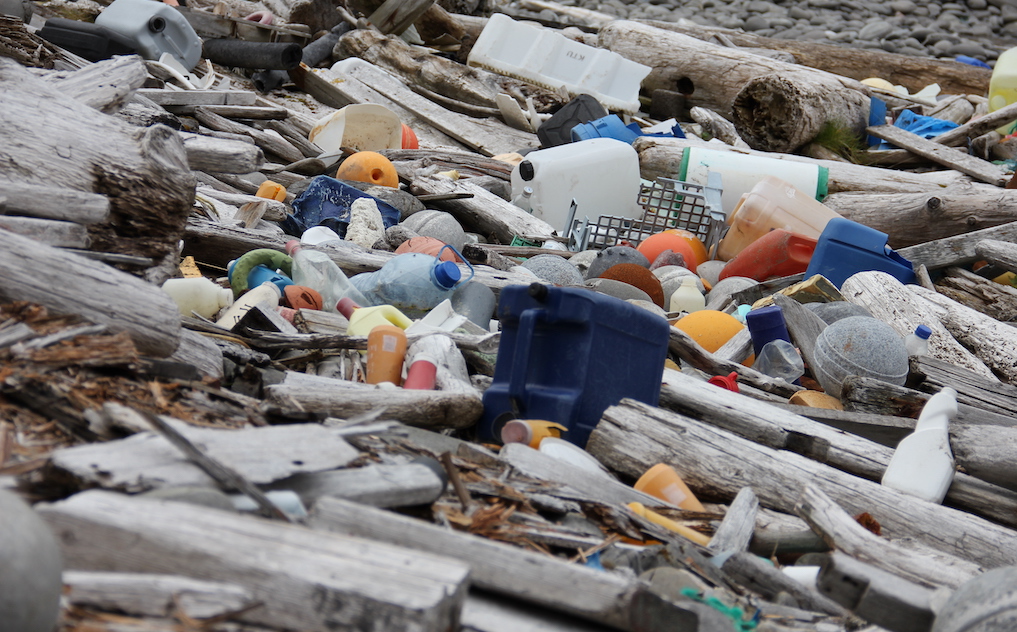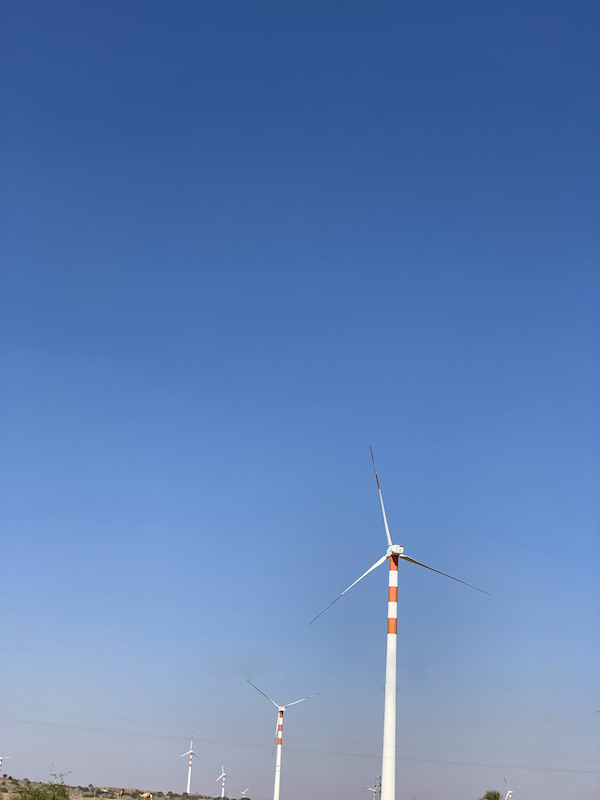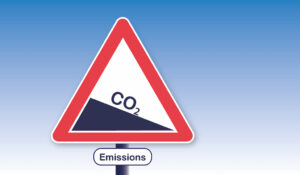Companies covered
Reliance Industries | ONGC | Tata Consultancy Services | HDFC Bank | Infosys
Companies seeking to squeeze the most brand value out of their corporate social responsibility (CSR) spends is fair enough. Yet, when they go on and on about the lives they ‘touched’, livelihoods ‘impacted’, ‘money’ donated, and suchlike, the idea shouldn’t be for that content (more like PR content) to cover up their irresponsible behaviours – for instance, their ‘not sustainable’ products or supply chains, or their high greenhouse gas emissions, or their shady manufacturing practices. The basic principles of corporate citizenship are non-negotiable. If someone out there is confused about this, let’s talk.
In 2014, when India Inc. had sort of started to rethink their social side, Institute of Rural Management, Anand, organised a CSR Roundtable and happened to put me on a panel to discuss approaches to measure CSR and impact thereof. What we panellists ‘almost’ (I say ‘almost’ because my fellow panellists included the CSR head of chemical fertiliser company UPL and the then CEO of Adani Foundation) agreed on was that before getting into creating measurement frameworks for CSR, which would always be proportionate to the company’s and its partners’ intent, one should look at and assess the company for the way it conducts business. More so, look at the real value that it adds and what it does for the collective progress of society…
The first point I am trying to make here is that the participants at the discussion agreed (or so I believe) that any company that continues to make a product that practically has no significant, or good, value (tobacco, carbonated beverages, all things sugary, all the cheap plastic…), or products that are literally dug out of the earth, or products whose need did not exist until they started to appear in ambiguous and/or misleading marketing campaigns need not bother with doing up a ‘sustainability’ report.
The second point here is that there is no point pondering the first point. One cannot really do much about it. All one can do is be thankful for the increasing awareness levels of us consumers who are making conscious decisions – the ones who can see the filth that the product may have created on its way to the shelf, and therefore refuse to buy it on those grounds.
 Now for the third point – which is that one may not assume a company to be ‘responsible’ just because they are talking about spending X amount to educate Y number of kids or empowering Z number of women. That part is fine in itself. However, do look at the natural resources that the company may have eaten into, the pollution it may be causing, or how well it treats its people – and this after deciding if it even has the right to exist. (Personally, I think the polluting companies – the ones with no focus on managing their waste or cutting emissions – are like those obnoxious people who do not flush the toilet after use or care a damn about brushing their teeth and maintaining basic hygiene.)
Now for the third point – which is that one may not assume a company to be ‘responsible’ just because they are talking about spending X amount to educate Y number of kids or empowering Z number of women. That part is fine in itself. However, do look at the natural resources that the company may have eaten into, the pollution it may be causing, or how well it treats its people – and this after deciding if it even has the right to exist. (Personally, I think the polluting companies – the ones with no focus on managing their waste or cutting emissions – are like those obnoxious people who do not flush the toilet after use or care a damn about brushing their teeth and maintaining basic hygiene.)
So, is CSR making the difference that it is expected to?
The straight answer to this is yes, though it’s not as much as it could (it can and it might in the near future). That’s mainly because a handful of ignorant or arrogant conglomerates – the ones who cannot be questioned – figured out ways to spend their mandatory funds in a way that technically qualifies as CSR expense but hardly makes any impact at the grassroots.
The CSR kitty is consistently growing
In the last five years, corporate India has spent a whopping Rs 76,355 crore*, which is more than the annual budgetary allocation to the ministry of health or department of education, and about 30 times the average annual budget of the ministry of environment.
Has that made much of an impact? We should be able to answer this query soon enough, as the government recently mandated the impact assessments of projects with budgets of more than Rs 1 crore.
Another question worth asking: are those social projects on par with the social schemes of the government? Well, there’s no ‘impact assessment’ mandate for the government’s initiatives, hence we can only do rough guesswork.
*As per data available on National CSR Data Portal
Without letting that incongruity dampen our spirits and instead looking at the bright side of things, fact is that a majority of the companies seem to have their heads and hearts in the right place. Decision makers are beginning to get a handle on the development sector and realise the value of impact investing.

Photo: JSW Group
Look at the current crisis for immediate reference. Had social spending not been mandatory, there would not be dedicated CSR teams or focused corporate”NGO partnerships that are playing a huge role in this fight against the pandemic. From food and ration supplies across the length and breadth of the country during the first phase of the pandemic, to extending support in building and ramping up healthcare infrastructure in the ongoing second wave, corporate India has gone way beyond the typical philanthropy that it was known for until about a decade ago.
Looking at the whole big picture beyond the pandemic, Team CauseBecause has closely witnessed the theory of change materialising at the grassroots. Ask any company that has put up information about their CSR on their website, and many of them will have stories to share about some sort of affirmative transformation that their projects have brought about – in the lives of rural women, in the education prospects for poor children, in creating avenues for gainful employment for the youth, in the form of environmental initiatives whose impact will start showing over time, and so on.
The stories may have started to sound like cliché, but they are real. There is no denying that CSR has created many opportunities for the less privileged and marginalised ones, given beneficiary communities hope and infrastructure where none existed before, enabled the setting up of various facilities in the forgotten rural, and so on.
Basic explanations done, now let’s go back to the actual question in the headline: are those big and good CSR spenders doing as much good on the sustainability front? To get to the answer, what this article does is put forth the content that they have shared in their sustainability reports and juxtapose the same with a few lines on their CSR spending patterns. Also, to keep things simple enough and at the same convey an idea of the general state of things, we have limited our study to the top five CSR spenders.
You are a stakeholder in million-dollar corporations
Everything that you buy – your food and groceries, clothes, vehicles, watches, insurance…, if it comes from a company/brand that has a net worth of Rs 500 crore or more, or turnover of Rs 1,000 crore or more, or a net profit of Rs 5 crore or more, it ‘has to’ spend 2 per cent of the average net profits of the immediately preceding three years on CSR activities.
This means that every time you buy from these companies, the two per cent of the profit that the company makes from the money that you pay has to go towards a cause. So, you have the right to ask, if not track, where that money-for-the-cause is being spent and how.
 Sustainability indicators
Sustainability indicators
Interestingly, while there are stringent laws that mandate CSR for companies, there aren’t any mandatory sustainability reporting parameters beyond standard compliances, which aren’t that stringent in the first place. For example, while the CSR law mandates large companies to spend two per cent of their net profits and also has a broad list of areas that the said money is to be spent on (the Amendment Rules that came out in January 2021 even mandate reporting on the names of NGO partners and the segregation of funds disbursed to each one of them), there are no set standards or government regulations that mandate companies to report on their GHG emissions, natural resource usage, human resource practices, or other such parameters that are included in ‘voluntary’ sustainability reporting. Yes, there are a few mandatory compliances such as environmental clearances, labour laws, disclosures under Companies Act, SEBI’s guidelines, etc., but they do not really cover the entire sustainability part.
So, when one wants to know about a company’s sustainability side – what they do about their carbon footprint, greenhouse gas (GHG) emissions, usage of natural resources, the way they treat their workforce, their gender and diversity quotient, governance structures – the first point of reference is their sustainability report. Brought out annually, a thorough sustainability report which is created as per an internationally-accepted reporting standard (usually GRI) can give one a fair idea about the sustainability-focused efforts of a company.
What
would you make of a company that couldn’t care less about their plastic packaging or emissions but tells us a life-transforming story of a woman who is a beneficiary of their CSR project?
OR
What
would you make of a company that funds the education of poor children with a part of the profits it earns by selling foods and beverages that are one of the causes of childhood obesity, shortened life expectancy rates…?.
 Environmental sustainability of top CSR spenders
Environmental sustainability of top CSR spenders
Although sustainability reports of almost all companies are available in the public domain, one needs to have time and patience to read those lengthy documents which can go up to a few hundred pages. More so, one has to be somewhat familiar with sustainability terminology as well as corporate jargons to understand those complex materiality indexes, graphs and diagrams that are meant to indicate what goes into planning, manufacturing, marketing, transporting and selling of their products and services, as also their life cycle – their impact on the planet and its people during their journey from the cradle to the grave, so to say.
Note that
- The names of the top CSR spenders as well as the areas where they spend their CSR money have been taken from the National CSR Data Portal, an initiative of the Ministry of Corporate Affairs, Government of India.
- There’s also a brief update on the areas where the companies have seemingly spent the majority of their CSR funds in the last couple of years.
- This study looks at only the environment-focused indicators – i.e., updates on a) greenhouse gases (GHG) and b) water consumption and saving patterns – from each company’s sustainability report. The notes on their innovations, interventions and strategies have also been taken from these reports.
- This study has reproduced and analysed the content that is already available in the latest (mostly from FY 2019) sustainability reports of the companies.
- The content in the ‘think about it’ boxes reflect the author’s opinion and is not meant to offend, pinpoint, or hurt sentiments, etc., and are not necessarily endorsed by the organisation that the author represents.
Reliance Industries Ltd (RIL)
RIL is the only company to have spent Rs 500 crore annually on CSR since 2014. In FY 2019 this amount went over Rs 908 crore, making it the largest CSR spender in the country.
A large chunk of the company’s CSR spends in the last five years has seemingly gone towards building healthcare and educational institutions, which, on the face of it, do add value to ‘society’. Which section of society it adds value to, is another matter though.
Talking of sustainability, RIL used to bring out a standalone sustainability report until FY 2018″19 and graduated to ‘integrated’ annual reporting in the last financial year. The integrated reports go beyond financial, employee, environmental and social data to also demonstrate how the company integrates broader risks and opportunities into its long-term sustainability strategy, risk management and operating policies, and points out the trade-offs between these issues.
 Environmental performance
Environmental performance
As specified above, here we will take a look at main points from their environmental sustainability indicators.
The report states that to set organisational boundaries for consolidated GHG emissions, RIL has utilised the operational control approach for the various entities covered under the report. Accounting of GHG emissions at RIL is based on its group-level internal standard, which is based on standards and guidelines issued by Global Reporting Initiative (GRI), World Resource Institute (WRI), World Business Council for Sustainable Development (WBCSD), International Petroleum Industry Environmental Conservation Association (IPIECA), and ISO 14064.
The company has registered eight clean development mechanism (CDM) projects with the United Nations Framework Convention on Climate Change (UNFCCC). These projects are related to energy efficiency, use of renewable energy and cleaner fuels.
RIL also claims to have built an in-house capacity to develop CDM projects and obtained the registration and issuance of the same in the form of Certified Emission Reductions (CERs) from UNFCCC.
- GHG emissions
During FY 2019″2020, the company managed a total GHG reduction of 351.4 kt CO2e due to their various energy conservation and renewable energy initiatives.
At RIL, stack emissions are regularly monitored at all manufacturing locations, for all the parameters stipulated in the ‘consent to operate’ including total particulate matter (TPM), oxides of sulphur (SOX) and oxides of nitrogen (NOx).
The continuous emission and effluent monitoring systems (CEMS) for emissions and discharges, installed at the refinery and petrochemical units, transmit real-time data
to Central Pollution Control Board (CPCB). In FY 2019″20, the company’s absolute PM emissions decreased by 21.7% and NOx emissions decreased 14.6% compared to FY 2018″19.
- Water recycled/reused
In addition to minimising the use of freshwater, the report states that the company continues to widen its use of recycled water and treated effluent.
Besides horticulture, the treated effluent is increasingly being reused for cooling tower make-up and for firewater requirement. Water losses are being minimised and rainwater harvesting capacities are being augmented.
During FY 2019″20, the total water recycled across all manufacturing plants was 74.4 million m3 as compared to 73.1 million m3 in FY 2018″19.
The 2018″19 sustainability report had mentioned the total energy and water consumption separately for its petrochemicals, retail and digital services verticals. For example, total energy consumption by its refining and marketing operations was 4,001.98 (000′ GJ/MMT of crude throughput), up from 3,698.34, (000′ GJ/MMT of crude throughput) in FY 2017″18. Likewise, RIL’s water withdrawal in 2018″19 was 155,387.71 (000′ m3), up from 150,518.83 (000′ m3) in 2017″18. So, did the upward energy consumption and water withdrawal trends continue until last year? The integrated report does not clarify this point. And does ‘saved a certain amount’ mean a consumption cut? We could not understand that either.
Total energy and water consumption
While the company has shared how much GHG emissions they reduced and also how much water they saved, there is no mention of the total energy and water they consumed.
While the sustainability progress in Reliance’s report may not look progressive at the moment, the company seems to have some plans. The operator of the world’s biggest refining complex stated in March 2021 that its non-energy businesses and increased use of renewable power would help it reach the goal of net zero carbon by 2035.
A quick note on their CSR
As per information shared on the National CSR Portal, of the Rs 908 crore that RIL spent towards CSR in FY 2019″20, Rs 500 crore was given for disaster relief. The second highest spend – amounting to approximately Rs 229 crore – was reserved for Jio Institute. Interestingly, the same institute had received a little over Rs 476 crore from the company’s CSR kitty of Rs 849 crore in FY 2018″19.
Oil and Natural Gas Corporation Limited (ONGC)
While there was quite a bit of noise a few years ago around public-sector undertakings not meeting their CSR obligations, the situation has changed for the better since then. ONGC’s website states that for the last two years it has achieved hundred per cent utilisation of its CSR budget, which has been to the tune of over Rs 500 crore each year.
Yet, one of the world’s largest integrated oil and gas exploration and production (E&P) companies (and India’s largest) does not have a separate sustainability policy. The company has confusingly merged it with the CSR policy and publishes the same on its website as ‘CSR & Sustainability Policy’. On the other hand, though, it has been bringing out comprehensive sustainability reports for almost a decade now. All reports contain disclosures made in line with GRI indicators.
The 2019″2020 sustainability report covers sustainability performance of ONGC, its three subsidiaries: ONGC Videsh, Mangalore Refinery and Petrochemicals Limited (MRPL), and ONGC Mangalore Petrochemicals Limited (OMPL), and two joint ventures: ONGC Petro additions Limited (OPaL) and ONGC Tripura Power Company Limited (OTPC).
Environmental performance
Chapter 6 in ONGC’s sustainability report is titled Climate Change and Energy, and introduces us to the Carbon Management & Sustainability Group (CM&SG) Department. The company has constituted this department for adopting a systematic approach towards managing its carbon emissions and building sustainable solutions.
- Energy
ONGC’s total energy consumption in 2019-2020 was 164,584.55 TJ, up from 156,033.71 TJ in 2018″19 and 162,542.38 TJ in 2017″18. This clearly indicates an upward consumption trend.
The company’s report lays a lot of stress on sourcing more renewable energy and does show some progress – the percentage of energy from renewable sources has gone up from 0.18 per cent in 2018 to 0.27 per cent in 2019. However, at this rate it seems like it will take a few more years for the company to cross the ‘one per cent’ mark.
- GHG emissions
At ONGC, carbon dioxide makes up most of its GHG emissions, and it comes predominantly from their processing and downstream operations, including exhaust from combustion units and flares.
In 2019, the direct GHG emissions of ONGC Group were 24.57 MMT of COâ‚‚e, up from 23.59 MMT of COâ‚‚e in 2018 and 20.17 MMT of COâ‚‚e in 2017. Likewise, the indirect emissions have also grown from 0.54 MMT of COâ‚‚e in 2017 to 0.74 MMT of COâ‚‚e in 2019.
- Water
ONGC uses fresh water for its E&P operations at offshore and onshore facilities. However, the geographic spread of its operations results in unique water challenges – its northeastern assets have an abundance of water, whereas its assets in Gujarat and Rajasthan and Uran Plant face shortage of fresh water. The company’s offshore installations have to use seawater desalination plants to meet their demand for fresh water.
The company’s efforts are focused on minimising the overall use of water in its operations, increasing the use of recycled water, and developing rainwater harvesting systems to replenish groundwater resources.
Interestingly, water consumption is one environmental parameter where ONGC seems to be doing fine. Although the company’s usage increased to 21.69 billion litres in FY 2019 – from 17.66 billion litres in FY 2017, the sources of water changed for the better. The company started relying more on surface water than groundwater and municipal water. The report also mentions ‘other’ sources from which the company drew 5.33 billion litres of water in FY 19, but the names of these other sources have not been mentioned in the report.
The consistent year-on-year increase in energy consumption as well as GHG emission levels indicate that there is a long way to go for the company before it becomes carbon-neutral.
A quick note on their CSR
Interestingly, while the company disbursed Rs 586.85 crore among 30 projects in FY 2018″19, in 2019″2020 the entire CSR budget of Rs 582.35 crore was allocated to just one project: the ONGC Healthcare Multispeciality Hospital at Rajabari, Sibsagar, Assam. This allocation was for Phase 2 of the project as it had already received over Rs 63 crore for Phase 1 a year earlier.
Tata Consultancy Services (TCS)
TCS is one of the top CSR spenders in the country, spending more than Rs 400 crore annually since 2016. The company’s CSR spends crossed Rs 600 crore mark last year.
TCS’s sustainability report states that the company views its responsibility for environmental stewardship seriously and has taken a ‘beyond compliance’ approach, setting a vision for environmental sustainability, as articulated in the Environmental Policy. This translates into a strong focus on operational efficiency and concern for the environment across the organisation and in the value chain.
Environmental Performance
- Energy and emissions
The company’s energy-consumption curve has been steadily falling since 2008, when it used to consume 319 kWh/FTE per month. The consumption now stands at 128 kWh/FTE per month.
In FY 2020, TCS consumed a total of 547 GWh of electricity, of which 10.9% was from renewable sources, ~3.5% was from onsite utilities, and the remaining was purchased electricity. Total direct energy used was 0.13 million GJ and total direct plus indirect energy used was 2.08 GJ. The total electricity consumed, as well as direct energy usage, have gone down, indicating better controls.
In FY 2020, the company added 2 MWp of rooftop solar, taking the total on-site rooftop solar capacity across its campuses to 7.6 MWp. This contributed 6.4 million units of electricity generated from in-house solar plants.
TCS has been able to reduce its specific energy consumption by over 60% over baseline year FY 2008, and bring down its greenhouse gas emissions (Scope 1 + Scope 2) from 3 tCO2E/FTE/annum in FY 2008 to 1.15 tCO2e/FTE/annum in the current reporting year, an appreciable reduction of 61.6%.
Other emissions
TCS’s sustainability report does not have data on ozone depletion potential (ODP) refrigerants but does state that it is committed to using zero ODP refrigerants in its operations. It may be noted that the company’s new facilities have HVAC systems based on zero-ODP refrigerants.
Talking of Scope 3 emissions factors, the company estimates that value chain emissions amounted to 1.57 tCO2e per FTE in FY 2020.
- Water
In FY 2020, consistent water-management measures, consolidation of offices and increased occupancy of greenfield centres helped reduce specific freshwater consumption by over 9% compared to FY 2019.
Of the 3.9 million kilolitres of freshwater consumed by TCS in FY 2020, 56 per cent came from municipal sources, 28% from third-party suppliers, 14 per cent from groundwater, and 2 per cent from rainwater harvested at its campuses. The water-efficiency measures have helped the company to reduce freshwater consumption by over 27 per cent over baseline year FY 2008. Total treated sewage recycled as a percentage of the total sewage generated was ~70% in FY 2020.
A quick note on their CSR
Since FY 2017, the company has been reporting its CSR spending in only five projects, of which the largest chunk has been going to TCS Foundation. Curiously enough, TCS Foundation does not seem to have any website; its annual reports or details of its initiatives could not be found on the internet either.
HDFC Bank
HDFC Bank is one of the largest private sector banks in the country and is steadily scaling up with a diverse base of more than 5.6 crore customers. The bank’s CSR pie has grown steadily, with nearly Rs 100 crore being added to its kitty every year. From over Rs 120 crore in FY 2015, the company’s CSR spending more than tripled in FY 2020, at Rs 535 crore.
Talking of sustainability reports, turns out that HDFC has the smallest report as compared to the other companies in this article. However, the report manages to cover major aspects with data on essential sustainability indicators, except water.
Environmental performance
- Energy and emissions
HDFC has undertaken several steps to minimise emissions, which include wide adoption of digital banking channels, energy-efficiency measures and paper conservation. Reporting on Scope 3 emissions, the bank includes emissions from air travel, rail travel, car hire, e-waste and paper used.
During FY 2019″20, the energy intensity per HDFC employee was 16.77 GJ. This is calculated on the basis of the total energy consumed by the bank within its operations, including energy from fuel for DG sets, owned vehicles and electricity.
The bank’s GHG emissions intensity stands at 2.88 MTCO2 e per crore total income. In FY 2019″20, it recorded about 13 per cent reduction in absolute combined Scope 1 and Scope 2 emissions, which can be attributed to the several initiatives undertaken by the bank.
HDFC also managed to reduce energy consumption across operations by regulating its existing equipment and installing energy-efficient equipment, among other interventions. In FY 2019″20, it recorded about 12% reduction in combined diesel and electricity consumption, despite an increase in its branch network. Overall, it reported 17.23 lakh kWh of energy savings, of which 145.5 KW came from its solar capacity, which in 2018 was 135.5 KW.
- Water
The report missed out on water consumption and saving patterns.
Interesting: Unlike the majority of Indian corporates, HDFC has defined its sustainability targets for 2022.
As per the company’s sustainability report, its 2022 goals are to reduce:
-
- Scope 1 and Scope 2 emissions intensity by 10%
- Absolute Scope 1 and Scope 2 emissions by 3%
- Total energy consumption by 3%
- Energy intensity by 5%
A quick note on their CSR
The company’s CSR initiatives are focused on education, healthcare, and rural and economic development, and it has updates on all the interventions on its website. However, in its consolidated report available on National CSR Portal, the company lists only six flagship projects.
In its last FY, of a total amount of Rs 535.31 crore, the company spent about Rs 386 crore on promotion of education. The other large allocations went into projects focused on rural development and poverty eradication.
Infosys Limited
In October 2020, Infosys became the first Indian company to turn carbon-neutral. The company’s press release post this milestone claimed that over the past years it had reduced its per-capita electricity consumption by over 55 per cent, with the goal being to transition to renewable energy.
The company claims to have developed a portfolio of community-based carbon-offset projects that focus primarily on socioeconomic development of rural communities and contribute to the UN Sustainable Development Goals (SDGs). The projects not only address climate change but also benefit over 100,000 rural families. This is a model that many Indian companies are yet to explore – this merging of CSR and sustainability initiatives in order to solve problems of needy communities and at the same time offset the company’s carbon footprint.
Environmental performance
- GHG emissions and energy
The company’s total GHG emissions – counting Scope 1 + 2 + 3 (with capital goods) – stood at 487,252 tCO2e in FY 2019. The company reported year-on-year reduction of per capita (Scope 1 + 2) of -2.93%.
The emissions-reduction initiatives of the company focus on renewable energy generation and procurement. In FY 2019, for its India operations the company consumed a total of 268,663,617 kWh electricity, of which 119,036,593 kWh (over 44 per cent) came from renewable sources. It also saved 532,892 kWh from energy-efficient retrofits in its buildings.
Infosys also reports on emissions of ozone-depleting substances – it lists seven substances, of which 6 report zero ozone depletion potential (ODP), the exception being R22, whose emissions were reported as CFC equivalent at 105.99, down from 122.83 in FY 2018. (Although the company has been steadily reducing these emissions year-on-year, the writer could not ascertain how damaging these emissions are. Also, why the R22 refrigerant is being banned in some countries is a subject that one needs to know more about.)
- Water
For its India operations, the company consumed 2,776,602 kilolitres of water in FY 2019″20, a significant fall from 3,237,292 kilolitres a year before.
The primary source of water at the company is municipal water (1,886,524 kilolitres), followed by private providers that send about 614,530 kilolitres to the company. It also makes good use of rainwater, having managed to reuse 152,470 kilolitres of the same in the last FY.
A quick note on their CSR
The company put their CSR money in 37 projects in 2019″20. It may be noted that Rs 50 crore went to PM CARES fund and over Rs 22 crore was spent on other Covid-19 relief work.The company spends a large part of its CSR fund on projects focused on environmental sustainability. For example, it contributed Rs 36 crore towards the rejuvenation of a lake in Karnataka. Other notable CSR spending has been on promotion of education, especially science education, as well as upgrading healthcare facilities for rural communities.
Any thoughts?
So, among the top five CSR spenders from 2020, there’s one conglomerate with interests in oil, gas, digital services and retail, two are oil and gas giants, another two are digital/IT services giants, with one bank in that mix. The same type of companies are the next top 10 spenders after these five. So this does give us a fair idea of the industries that have been profiting the most.
A thought here: When was the last time you skipped paying your electricity bill, argued/bargained over the fuel price, or missed an EMI, which actually is totally impossible with the digital/technological advancements and environments that tech companies have woven around you?
Looking at the sustainability reports, it seems that the ITeS companies and banks may manage their net-zero emissions provided the feasibility and reliability of alternative energy resources continue to improve and the ongoing research and experiments to harness and store more energy are successful. On the other hand, it’s a long way to sustainability for traditional oil and gas companies, especially the ones who are hardly meeting the desired Scope 1 and Scope 2 standards. The more worrisome part here is that these companies continue to enjoy some sort of immunity because of the country’s dependency on them and their economic viability. A sunken barge here, a spill there, and a fire somewhere will continue to be labelled as natural disasters.
 Think about it
Think about it
Are the Sustainable Development Goals practical? Didn’t we learn it in school that goals without well-thought-out plans, strategy and focus are not goals but dreams?
Think about it
How old are you? What is the average age of people who are supposedly taking decisions about the planet’s sustainability? And what is the age of your children?
